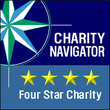|
Aging in American is changing - it’s an undeniable fact that our population is growing older: between now and 2050, the number of Americans over the age of 65 is expected to double and Colorado is no exception. In fact, we have the third-fastest aging population in the nation. By the end of the current decade, the state demographer projects that the percentage of adults aged 65-74 will increase by 19%, those aged 75-84 by 68%, and those 85 and older by 49%. These trends are consistent across all areas of the state, from the Western Slope to the San Luis Valley to the Front Range. Here in Douglas County, the 75-plus population is expected to grow by a whopping 446% percent by 2040 – that’s the most significant increase in the state. This burgeoning generation of older adults is distinct from previous generations in several ways. Most importantly – they’re living longer! Since 1950, life expectancy in the U.S. has increased from 68 years to 78.8 years (pre-pandemic). The gender gap in life expectancy is also shrinking, from 7 years in 1990 to 5 years (76.1 years for men versus 81.1 years for women) today. Older adults today are more racially and ethnically diverse than ever before. They’re also working longer - by 2026, 26% of men and 18% of women are expected to remain in the labor force. The dramatic increase and diversification of the older adult cohort and the changes in the way they live and work present both challenges and opportunities. “Aging” is really an umbrella term for a complex variety of concerns that affect people differently and touch many different areas of our society. As the Office of State Budgeting and Planning says, “a growing and aging population impacts every department in the State, from Human Resources to Natural Resources.” We have a real chance to structurally change the way we prepare for and address aging questions and issues. As the older adult population grows, we’ll need a more robust homecare workforce – we’re already seeing shortages in this area affect the folks that we serve. Some of the challenges we have heard from workers in this vital industry are a lack of guaranteed hours and lower than average wages. At present, most of these workers come from agencies that do not offer those kinds of inducements. Aging advocates in the healthcare space also suggest that we may need to transform our healthcare system from one of disease-management to a more preventative approach. In the business community, potential solutions include supporting older adults through the creation of age-friendly workspaces. That’s not just a label – age friendly workplaces must demonstrate that they enact policies, practices and programs supporting people age 50+, and commit to providing meaningful employment, development opportunities and competitive pay and benefits for older adults. Aging Resources was proud to become one of the first certified age-friendly workplaces in Colorado last year. Another measure employers may consider is the introduction of more flexible hours – this could help businesses keep institutional knowledge in house via intergenerational mentoring. The best solutions will always occur at the level of the community and will come from older adults themselves. That’s one reason why, at Aging Resources, we place such a high priority not only on helping older residents but listening to them as well. Our mission is to facilitate their continued engagement in their communities, whether they’re continuing their career journey, receiving services, or finding new leadership opportunities. When we come together, we all stand to benefit – now, and in the years to come.
0 Comments
Leave a Reply. |
AuthorsBlogs are written by ARDC staff members Archives
January 2024
Categories |
Aging Resources of Douglas County 104 Fourth Street, Castle Rock, CO 80104 303-814-4300 [email protected]
©2023 Aging Resources of Douglas County | Help for Senior Citizens | Sitemap XML
All public documents will be available upon request.
©2023 Aging Resources of Douglas County | Help for Senior Citizens | Sitemap XML
All public documents will be available upon request.

 RSS Feed
RSS Feed



